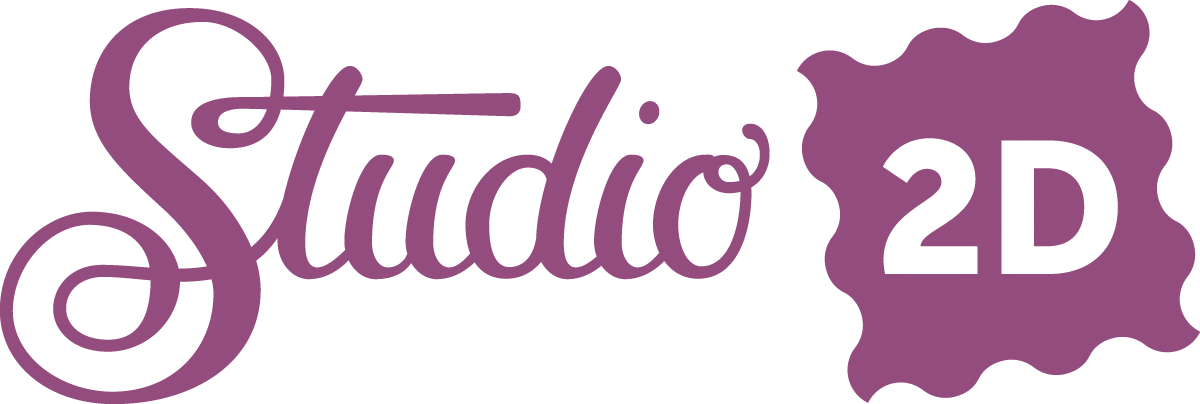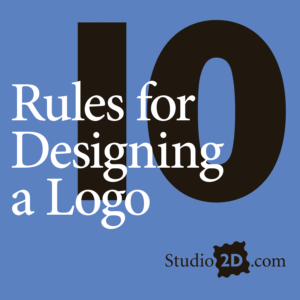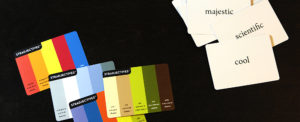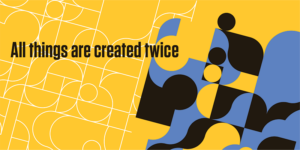Book Review: The Path of Least Resistance by Robert Frtitz
What does a musical composer know about creativity that he can teach the rest of us? Robert Fritz knows enough to be able to say, “You can be the predominant creative force in your own life.” My own experience bears this out.
The first part of the book describes how most of us go through life. We either respond or react to the circumstances around us. People who respond positively to circumstances are “nice,” and people who react negatively are “difficult.” But this is a trap that leaves everyone feeling powerless. The more you try to change your external circumstances, the more find yourself oscillating within an unchanging structure—either reacting or responding.
The key is to change the structure—to move away from reacting or responding and toward creating. Creating, he says, is not problem solving. The more intense the problem, the more action is directed at solving it. As the problem subsides, less action is brought to bear, and the problem begins to grow again.
As an example, he describes the famine in Ethiopia that moved the world to donate emergency aid. That bought some time, but the underlying problems in Ethiopia remained—political turmoil, food insecurity, and a weak economic climate.
“Freeing your mind” is another creative boondoggle, he says. Most people who accomplish greatness do not get there with a sudden breakthrough. They toil for years, methodically and persistently. If you were able to look at Beethoven’s sketchbook, you would see “a focused study” of themes and variations, not a jumble of free associations.
Here I disagree with the author, and I was quite turned off at this early stage of the book. I believe in both free association and problem solving. However, he did eventually win me over.
As a contrast to Ethiopia, he related a story of Uganda. Instead of trying to solve problems, his team asked the people of one village what they wanted. By focusing on the dreams and visions of the villagers, they were able to make progress toward clean water, sustainable agriculture, and good health.
This example made clear that real creativity transcends the problem with a new reality. I can get on board with that.
A Change in Orientation
Whereas a reactive-responsive person is the victim of circumstances, a creative person uses circumstances to bring about a vision.
I have been able to envision what I want and bring it about. As a teenager, I wanted a college degree more than anything because it represented freedom to me. With that dream in mind, nothing could derail me from attaining it.
Then I envisioned having my own design firm, then owning a house, then my perfect mate, then moving to Colorado. All those dreams came true, and more. In fact, it was achieving my life’s dreams that propelled me to understanding and sharing the creative process widely so that more people can realize their dreams.
The Reason People Get Stuck
Some structures are unresolvable. As an example, Fritz talks about having a desire, while at the same time believing that you cannot ever attain it. As we move toward our desire, the belief that it is impossible pulls us back with more and more force. We can get caught in an exhausting structural tension of oscillation. Sometimes, to stop the oscillation, we simply give up our desires. When you are working for an organization whose goal is to minimize tension, you go along to get along. Only “realistic” ideas are considered, and creativity suffers.
Beware of another kind of structural tension—conflict manipulation. Nonprofits use this strategy to raise money, and politicians use it to get elected. They create negative emotions such as fear, guilt, and pity, then convince you that they are the only ones who can alleviate the suffering. At the extreme, a terrorist creates unbearable conflict in the hopes of getting a desired result, often in the name of a higher good.
Over time, conflict manipulation creates powerlessness, because there always has to be a more dire warning to move people to action. Well-meaning people describe terrible visions, and even those that want to help feel that the problem is never solved.
There is another way to get what you desire. The universe certainly has limitations, but not as many as we assume. Shift the structural tension to one of creation.
A New Kind of Tension
Creativity thrives on tension, but it has to be of a different structure. Start with a clear vision of what you want, then take a cold look at what you currently have. That in itself is a discrepancy that fuels the creative process. Be realistic about your situation but not about your goals. What you want—your vision—might be unrealistic. “The only time you know for sure whether creating a result is possible or not is when you have done it.” Flying was impossible until the Wright Brothers did it.
What Do You Want?
We talk about the “creative process,” but creation is not simply going through a process. One of the hardest parts for some people is articulating what they really want. They tend to talk about getting a certification, or optimizing performance, or developing strategies.
Forget about what you already know. “The creative process is filled with discovering what you do not know.” What you want should be considered independent of the process needed to get it. The ability to envision what is not yet real is unique to humans. It drives art and science. And it is a joy in itself because it is a process of exploration and revelation.
Reality
Though creators can bring about amazing achievements, they are not protected from pain. In fact, we creators might even feel things more deeply because we are facing reality rather than running from it. The difference is that our lives are our creation, not a product of circumstances. Creators create no matter what emotions are prevailing.
“The foundation of reality is the only place you can start the creative process,” says Fritz. Realize that your mental filter is always on. Children color a lake blue because they know water is blue. But the next time you look at water, notice that it might be green, brown, orange, or violet, depending on what is reflected in it.
Confirmation bias has been proven. We notice things that confirm what we know to be true, and ignore evidence that doesn’t fit our narrative. The creator learns to be aware of biases and strives to look at the world with fresh eyes. Separate your preconceptions from your observations.
Every vision must be followed by action, or it is only a dream. Once you are moving toward your vision, a course correction is easy.
The Blank Page
Starting with nothing can be both scary and exciting, and Fritz recommends this is where you start. He thinks visually, but I encourage using all your senses in your vision. When you fully experience your vision, it gives you tremendous confidence in it. Your vision needs only as much detail as necessary for you to know when you have attained it.
There is no right or wrong way to attain your vision. Innovations are a byproduct of creation.
“It is not common for people to think of their own lives as creations,” he says. Once you become a creator, you will see that you can use your skills on your life as a whole.
The Rhythm of the Creative Process
The first stage of creation—germination—comes with a burst of energy. Some people get such a kick out of this phase that they rarely complete a project. They jump from one beginning to another. Alfred Hitchcock was more excited about plotting out each frame of a movie on paper than actually filming it. But he did follow through with the filming, masterfully. The thrill of germination leads to the quieter stage of assimilation.
Assimilation is internal and organic. It might not be obvious anything is going on outwardly. The subconscious mind is at work in this phase, making connections and insights. Mozart describes it thus: “My ideas flow best and most abundantly. Whence and how they come, I know not; nor can I force them.” Even mathematicians use the subconscious mind when solving a hard problem. Getting away from pressure, relaxing the mind, focusing on something enjoyable, are ways of encouraging subconscious assimilation. Momentum is gained toward completion.
Completion is when your creation is released to the world. The feeling is triumphant, yet can come with a sense of loss. Your “baby” now takes on an identity of its own. Some people look at past creations with detachment, and might even say, “I don’t know how I did that.” Each creation brings you closer to mastery of the process, and the ability to create the next thing more easily.
Decisiveness
A creator must make decisions. The more decisions you make, the more you develop an instinct for making the right ones. The right choices bring your vision closer to reality. Many people have difficulty making choices. Sometimes choices are limited by what seems possible. Some people choose a process rather than a result, such as “taking a course on leadership” rather than “being a leader.” Some choose by eliminating options until only one remains. Some people take a poll and do whatever has the most support.
You can choose to avoid what you don’t want, but choosing what you do want is much more powerful. Making that choice, the choice of a creator, is liberating and uncertain.
Fritz talks about three kinds of choices. Primary choice is not a step toward another goal, but something desired in and of itself. If you play the saxophone simply because you love to play, that is a primary choice.
Secondary choices are steps toward a primary choice. World class athletes practice long hours, not because they are forced to, and not necessarily because they love the exercises, but because their primary choice is to excel in their sport.
Fundamental choices are those in which you commit yourself to a basic life orientation or state of being. Fundamental choices can be made at any age. Many successful people did not show a lot of promise in their youths. For example, Albert Einstein was considered idle and dull, and he failed to pass his entrance exam to the Polytechnic Institute of Zurich.
Once people make a fundamental choice to fulfill a purpose in life, they can easily accomplish many things that seemed impossible. Choosing to be the creative force in your own life is a fundamental choice. “In the orientation of the creative, you create your own satisfaction, independent of the circumstances. Then you bring satisfaction to those circumstances in which you are involved.”
Furthermore, “you do no need anyone’s permission or agreement. You do not have to wait for outside resources to empower you.” Wow! Imagine if a majority of people made the fundamental choice to be creators rather than the victims of circumstance.
Because each of us is unique, each of us has the potential to create things that no one else can.
Fritz’s Five Step Creative Process
1. Conceive of the result you want to create
Begin with the end in mind, as Stephen Covey would say. This is harder than it sounds, because we are taught that our life comes with limitations. To envision what you really want, forget about what is possible. If you have never done this before, it could take some time to identify that. Try writing some audacious visions in a journal. Try picturing yourself in a variety of scenarios. Eventually you will find one that feels right—that energizes you.
2. Know what currently exists
This is also difficult for most of us because we are used to telling ourselves, and being told, little white lies. “It’s not that bad. I’ll be OK.” You cannot create something without a firm grip on current reality. This will feel uncomfortable if you are used to rationalizing or distracting yourself. Your dreams will not come true until you get used to dealing with reality.
3. Take action
Once you know what you want and your current reality, a tension is created. This becomes the path of least resistance. You will invent ways of reaching your vision that you had never known before. Opportunities will present themselves. Some of the actions you take will move you toward the desired result, but most will not. The life of a creative person is similar to that of a scientist. You try things, and if they don’t work, you try something else. Every experiment teaches you something. Don’t give up. Return to your vision.
4. Learn the rhythms of the creative process
Fritz’s creative process has three phases:
Germination: “Excitement and newness.”
Assimilation: You internalize your concept. A more quiet energy is generated which drives action.
Completion: You can use the buzz of completion to drive your next project.
5. Creating momentum
“Each new creation gives you added experience and knowledge of your own creative process,” says Fritz. Creation is a skill that you can hone and use for the rest of your life.
___
If my review piques your interest, read the book. All of these concepts are delved into more deeply, with many amazing anecdotes of Fritz’s own students.







